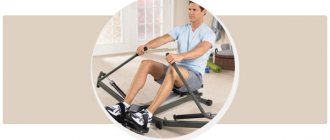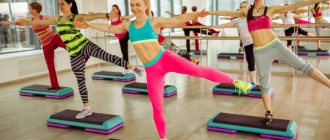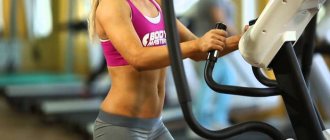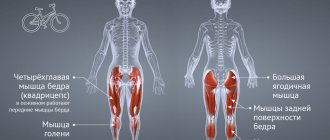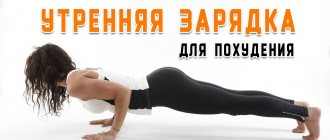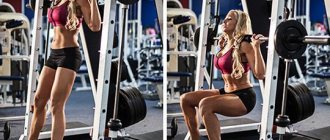How many calories are burned on a rowing machine?
Date: April 14, 2017
Most people associate cardio training only with running and cycling. We continue to dispel the myth that running is the best cardio and encourage you to add rowing to your workout routine. Moreover, to do this, you don’t need to wait for summer and go to a pond, because most fitness clubs have had rowing machines for a long time.
What is a rowing machine
These simple devices can be found in any CrossFit gym, and in most regular gyms. If you prefer to train at home, then such equipment will cost about 40 thousand rubles.
The rowing machine simulates as accurately as possible the movements that rowers make while using the oars. For a long time, only the rowers themselves trained on such equipment, but a dozen years ago representatives of the fitness industry drew attention to them. Still would! After all, a rowing machine combines strength and aerobic exercise, allowing you to burn more than 800 calories in an hour of intense training. For comparison, in an hour of running you will, at best, burn 500-600 calories. So for weight loss and fat burning, rowing is at least a third more effective than running.
In addition, rowing is a good strength load for almost all muscle groups. First of all, the load falls on the back muscles, which is why this exercise is recommended for scoliosis, osteochondrosis and other problems with the spine. A rowing machine will quickly correct your posture, making your chest look taller and fuller. In addition to the back, the movement involves the shoulders, arms, abdominal muscles and even legs.
Technique
In order for exercise on a rowing machine to give maximum effect and strengthen the spine rather than harm it, it is necessary to follow the correct technique. The exercise can be roughly divided into four main movements: catching, diving, finishing and recovery.
The catch refers to the beginning of the movement, during which you begin to gain momentum for the stroke. If it were not a simulator, but oars, then grip would be considered the moment when you lower them into the water and catch the resistance of the water.
The main part of the exercise is the dive , during which you first push yourself back with your legs, straightening them completely, and then connect your back to the movement. This is where the most common mistake happens - the new ones try to row with their arms and a little with their back, forgetting about the movement of their legs or performing it after their back and arms.
The third part of the stroke is the completion , during which you reach the handle of the machine with your hands to the lower part of the chest.
The last stage is recovery , when we have a couple of seconds to rest while we return to the starting position. The backward movement begins by spreading our arms to the sides, after which we bend our legs, move our body forward and spread our knees to the sides.
All movements should be performed measuredly and smoothly, without sudden movements. The spine must be kept in a perfectly straight position throughout the movement.
Building a workout
A rowing machine workout must begin with a 10-minute warm-up, the purpose of which is to warm up the body as much as possible. After this, you can move on to the main part. There may be several options for constructing a workout, and all of them are quite effective, so you can try them all in turn and choose the one you like or alternate types of load.
Basic training at moderate intensity
Work for 20-40 minutes without a break with an intensity of 18-22 strokes per minute.
Interval training
This workout involves several rounds with a rest period in between and can vary in intensity.
Low intensity - 12-15 minutes of work, 2-3 sets, 3-4 minutes of rest between sets
Medium intensity - 6-8 minutes of work, 3-5 approaches, 3-4 minutes of rest
High intensity - 2 minutes work, 5-10 sets, 1 minute rest
Pyramid
Option for advanced with a gradual increase and then decrease in intensity: 4 minutes - 18 strokes/min, 3 minutes - 20 strokes/min, 2 minutes - 22 strokes/min, 1 minute - 24 strokes/min, 2 minutes - 22 strokes/min. min, 3 minutes - 20 strokes/min, 4 minutes - 18 strokes/min.
Rowing machine: general information
A rowing machine, unlike a treadmill, ellipsoid, stepper and exercise bike, actively involves the upper and lower body in the work, but using the knee joints in a gentle manner. The simulator is one of the safest and is suitable for rehabilitation exercise after illness and injury.
Why do you need a rowing machine?
The rowing machine imitates the movements of rowers, which allows you to intensively work out the muscles of the back and shoulder girdle, as well as keep the muscles of the lower body toned.
According to the specific load, a rowing machine is more suitable for men than women, as it allows you to pump up your upper body well, using your legs and buttocks intensively, but not in a targeted manner. But for women it will also be useful for strengthening the muscles of the arms, back and abs, as well as keeping the legs and buttocks in good shape.
Pros of a rowing machine:
- Involving 80 to 95% of the body's muscles, which allows you to keep your body in shape at home.
- Improving blood circulation and strengthening the work of the heart muscle. Engaging a large number of muscles requires intense blood supply, which makes the heart work faster and more powerfully.
- Supplying the body with oxygen, which makes a person more alert and energetic.
- High calorie consumption. According to Harvard Health Publication, a man of average weight (80-85 kg) burns more than 350 kcal in half an hour of exercise, which is more than in 30 minutes of running on a treadmill.
- Increase in overall body strength. Rowing is not the easiest sport, as you have to work intensively with your whole body, using your legs. Regular exercise on a rowing machine strengthens the muscles of your back, arms, shoulders and abs, and also makes your legs stronger.
- Increased endurance. Exercises on a rowing machine strengthen and develop the heart muscle, normalize the functioning of the circulatory system, which improves the body's endurance.
- Acceleration of metabolism by strengthening muscles, reducing the percentage of adipose tissue and stimulating blood circulation and lymph flow.
- Reduced stress on joints, which reduces the possibility of injury. Due to its low risk of injury, the simulator is used in rehabilitation centers for recovery after illnesses and operations. It is also useful for obese people for whom other types of cardio training are contraindicated.
- The ability to pump up your upper and lower body at the same time, which is impossible with other cardio equipment.
- Versatility. The rowing machine is suitable for various purposes: losing weight, keeping fit, strengthening muscles and the cardiovascular system, rehabilitation and regular physical activity at home.

Cons of a rowing machine:
- Reduced load on the legs compared to other cardio equipment.
- Monotonous training, since during rowing you can only perform a certain range of movements.
- A combination of strength and cardio exercise, which is not suitable for those who are looking exclusively for an aerobic exercise machine.
- The need for complete concentration on movements, which makes it impossible to watch TV programs or movies during home exercises.
- Large dimensions of the simulator and its high cost.
Contraindications
Thanks to good body support during training and the most natural range of movements, the rowing machine is considered the safest cardio equipment.
But some contraindications still exist. You should familiarize yourself with them when planning to purchase an expensive exercise machine for your home.
- Arterial hypertension - a tendency to high blood pressure prohibits training on all types of cardio equipment.
- Radiculitis, osteochondrosis and severe scoliosis - problems with the spine can be a contraindication for rowing. But in mild forms of these diseases, rowing, on the contrary, is an indication, as it strengthens the muscular frame and develops the spine.
- Diseases of internal organs - intense exercise can cause pain, so it is not recommended.
- Colds, fever, women's periodic pain - exercise can increase fever and pain, so you should refrain from rowing during an acute period of illness or at the beginning of the cycle.
- Injuries in the initial stage - stretching of the back, muscles of the shoulders and forearms will prevent you from performing the exercises correctly, which means that the training will not be effective and will aggravate the situation.
The presence of a small number of general contraindications and the absence of specific ones suggests that the rowing machine is a good option for home cardio training, suitable for the vast majority of users.
Cardio Equipment Review: Pros and Cons
3 reasons to buy a rowing machine
- Rowing exercises involve all muscle groups. The load on the body occurs in the following proportion: 60% on the bottom and 40% on the top, contrary to common misconceptions that the machine only trains the body and arms. During rowing movements, the back, chest, arms, shoulders, abs, as well as the muscles of the thighs and calves are actively worked.
- Energy consumption is up to 8 kcal per minute, which is more than when jogging on a track and in open areas. Due to its high energy consumption, a rowing machine is great for losing weight at home.
- Accelerates metabolism and quickly gets into shape compared to other aerobic exercise equipment. Unlike a stepper, elliptical or treadmill, a rowing machine provides a forceful load on the muscles, increasing their strength and shaping the relief. As a result, you get two bonuses: pumping up your body and improving your health.
After House of Cards, the popularity of rowing machines in the world has increased. The main character Frank Underwood used this exercise machine to stay in shape at home. And if earlier movie heroes trained mainly on treadmills, then the appearance of a rowing machine on the screens instantly attracted the attention of the public and the popularity of rowing machines grew exponentially.
The main thing about the rowing machine + 8 workouts

Zozhnik publishes a translation of the mensfitness.com guide to the rowing machine (with ready-made workouts), made by our friends from bodyboss.ru.
Have you noticed that the rowing machine, also known as an ergometer, very often gathers dust in the corner of the gym, unused? Remember how Frank and Claire Underwood used such machines for training in the TV series House of Cards. You've probably even tried training on such a simulator. But chances are you were using it incorrectly.
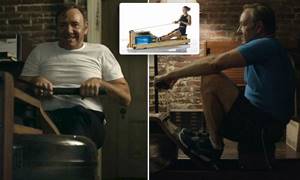
Choosing a rowing machine for home
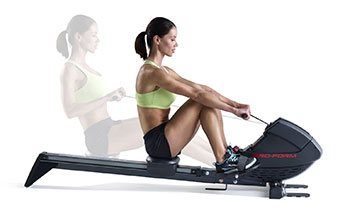
If you decide to rent a machine or buy one for home use, then it’s worth understanding what types there are. A mechanical or magnetic exercise machine is suitable for home use. The mechanical option is quite common, but some models make a certain noise during operation and may have an uneven ride. In newer models, such problems are much less common. For beginners, this type will be a good option. The operation of a mechanical simulator is based on the work of hydraulic pistons that provide resistance.
Magnetic models have additional features. Load levels are adjusted using the built-in handwheel. With such machines you can perform many types of exercises, which expands your training options. These options are compact, do not take up much space and are easy to fold.
Full body workout
Rowing machine training is incredibly effective for the entire body, allowing the athlete to develop aerobic endurance and muscle strength. At the same time, lack of proper technique and training among gym goers can lead to injuries when using the rowing machine incorrectly.
So we turned to the top rowing experts in the United States at the University of California, Berkeley - head coach Mike Teti and assistant coach Scott Frandsen - and asked them to tell us everything there is to know about the rowing machine. Both specialists are Olympic medalists (Tetes as an athlete and coach) and have a great understanding of what needs to be done in the gym and on the water to achieve the shape of a gold medalist.

Mike Teti, rowing expert
To make the most of your time on the rowing machine, you should:
– incorporate ergometer exercises into your standard fitness program.
– avoid the most common mistakes and constantly pay attention to the technical component of your movements during training, even if you feel tired.
– spend some time getting to know the rowing machine and its settings.
Burning calories and controlling your weight through physical activity is a well-known and effective method. And the most effective for these purposes is a combination of strength and cardio training. You can alternate them, for example, train with a barbell and run on a treadmill, or you can just exercise on a rowing machine.

The rowing machine provides both strength and aerobic exercise at the same time, forcing all the muscles of the body and all body systems (cardiovascular, respiratory, etc.) to work. The athlete does not need to train each muscle group separately and spend a long time on a cardio machine. Thanks to such versatility, a rowing machine burns more calories than any other physical activity (in an hour on a rowing machine you can burn up to 1000 kcal, and for example, running, depending on the intensity, burns 200-600 kcal).
It turns out that choosing a rowing machine for weight loss also means saving time on training.
There is one more pitfall that should be taken into account when training for fat burning. People who are overweight experience enormous and unnecessary stress on their joints, and increasing it with physical exercise is unwise and dangerous. Therefore, it is better to exclude running and everything related to active movements (sports games, martial arts), as well as exercises with weights from training.
This is another major benefit of rowing for weight loss.
In fact, rowing is one of the few (or, to be more precise, three, along with swimming and skiing) sports that harmoniously develop the entire body and do this without damage to other organs. But not every rowing machine simulates real rowing well. Water resistance rowing machines do this best, for obvious reasons.
And that's not all! For training, including fat burning, to be effective, the load must be regulated. Warm-up requires one level of resistance, cardio requires another, and strength training requires a third. It should also be taken into account that each person’s physical condition is different and different people can exercise on the same simulator.
This problem was solved by specialists from the Australian company First Degree Fitness. All FDF water resistance rowing machines feature a unique load control system. It significantly increases the capabilities of an athlete training for weight control purposes.
With First Degree Fitness rowing machines, you can forget about exhausting training. An athlete simply enjoys training on them. Even rowing under the splash of water in the tank creates an indescribable atmosphere, simultaneously and imperceptibly burning extra calories.
Each element of the exercise machine, seat, footrests, handles are adjustable and designed for a person of any size, which makes training comfortable and therefore effective. The best guarantee on the market also means the best quality. And the design will not leave even discerning connoisseurs indifferent.
It is hardly possible to find a more pleasant, safe and effective way to lose weight.
Rowing machine: technique
Olympic rowers and experienced collegiate rowers perform strokes with effortless strokes that appear as if even a child could do it. However, this opinion is far from reality, since rowing movements have many nuances and it can take you years to master the correct technique on the water.
Fortunately, for those who work out at the gym, the rowing machine is not a fancy machine, and you can master it with basic technical knowledge and a little practice.
Capture

“Catch” is the beginning of the stroke. “This is the point of full compression where the athlete begins to gain momentum for the stroke,” Teti says. If you were on a real rowing boat, you could see how at this point in the stroke the oar enters the water and "captures" the resistance of the weight of the water.
Dive

The “dive” is the main part of the stroke, during which the legs move first, followed by the back and, at the very end of the movement, the arms join in to complete the stroke .
Execution technique
The rowing technique seems quite simple. But in reality, there is some work to be done here.
Performing an exercise on a rowing machine is divided into several phases:
- Capture
Starting position - legs bent at the knees and tense. The arms are straightened and hold the handle. The back is straight and slightly tilted forward. The lower back muscles are tense.
- Push
The second phase of the movement, where the main load is performed by powerful extension of the legs. The back moves back slightly. While simultaneously pushing your chest forward, begin to squeeze your shoulder blades together, bending your elbows and pushing your feet away from the supports.
- Traction
The legs are already straightened and the main load in the movement is transferred to the upper body. By bending the arms and tensing the abdominal muscles, the handle of the exercise machine is pulled towards the body.
- Recovery
Straighten your arms, tilting your body slightly forward. At the same time, keep your back straight and tense. Bend your knees and return to the starting position.
The stroke phase should be faster than the recovery phase (return to the starting position).
If the exercise is performed correctly, the load on the spine is minimized.
Practice shows that most amateurs make the same gross mistake - they perform the movement “through the spine.”
That is, they row with their backs, not with their legs. As a result, a large load falls on her, which can lead to unpleasant consequences.
The best option for mastering rowing is to take several lessons with a personal trainer to establish the correct technique.
Rowing machine - device
Load settings
A very common mistake is the tendency to set the maximum load, but Frandsen completely disagrees with this: “ In the 18 years that I have been rowing, I have never set the load level above 3-4 out of 10. Anything above this level imposes excessive stress on the body at the start of the stroke and can lead to injury .”
He recommends keeping the load low and practicing grip position and speed to learn how to handle the resistance of the water, rather than relying on the machine as the only source of load.
Time interval
“Split” determines how long it will take you to cover a distance of 500 meters. For example, if you set the “split” to 1 minute 45 seconds, then you need to row with enough effort to cover 500 meters in that time.
“This is a great way to make sure your training (and technique) is delivering results while reducing your time to complete the course,” Frandsen replies. You can use workout programs by selecting the "Select Workout" option and then clicking the "New Workout" button, after which all you have to do is enter your work intervals based on time and distance, as well as the amount of rest between sets.
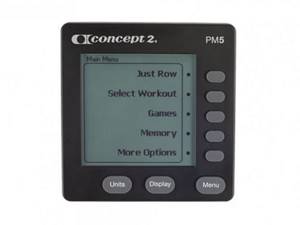
Menu of one of the most popular rowing machines.
The latest models of rowing machines manufactured by Concept 2 have a screen with various options that allow you to determine the data and numbers that you will see during your workout.
Using the menu, you can control the calories you burn and the energy you generate, but "most rowers use the screen to control the time it takes them to complete a 500-meter course or a simple time period," notes Teti.
The number denoted by SPM is the number of strokes per minute. Generally, the length of time and stroke rate are inversely proportional, meaning that as the stroke rate increases, the length of time will decrease.
Top 10 rowing machines
The price of a rowing machine depends on the complexity of the mechanism, design features, technical features and the presence of smart technologies.
If we talk about minimum prices, then the simplest mechanical rowing machine with three load levels, designed for a weight of 90 kg, will cost you only 7 thousand rubles. A mechanical one with 5 load levels and a maximum weight of 120 kg will cost from 8 thousand rubles. Electromagnetic with built-in training programs and no less than 16 load levels, a maximum weight of 100 kg costs from 26 thousand rubles.
In general, the cost of good models for home varies from 26 thousand to 100 thousand rubles, depending on the maximum weight of the user and the manufacturer. The most expensive are water models with a wooden frame; their cost starts from 80 thousand rubles.
Mechanical exercise machine BaseFit BF-501
Magnetic trainer Sport Elite SE-104
Mechanical trainer DFC R71061
Magnetic trainer Torneo Octopus V-210
Magnetic trainer DFC R8003
Magnetic trainer DFC R7108P
Aerodynamic trainer ProForm R600
Aeromagnetic simulator AppleGate R10 M
Aerodynamic trainer NordicTrack RX800
Water rowing machine VictoryFit VF-WR801
Rowing machine workouts
During workouts, not only is maintaining proper technique critical, but also making sure “you're warmed up enough to do the workout, especially for strength training,” Frandsen says.
He recommends starting slowly, adding 1-2 training sessions per week (take 30-40 minutes, recommended before strength training).
Below we present ready-made workouts - choose one of them for yourself if you are a beginner.
Strength training 20 strokes
Sets: 2 Reps: 8 Speed: 20-24 strokes per minute
Perform 20 strokes at maximum speed, maintaining perfect technique, followed by 10 relaxed strokes with minimal intensity. Congratulations, you've completed one rep.
You need to do 8 such repetitions - this will be 1 approach.
The speed when performing fast strokes should be 20-24 strokes per minute. The goal is to achieve a minimum period of time for each repetition of 20 strokes.
Use strokes with minimal intensity between repetitions to establish proper body position and restore range of motion.
Take a short break, no more than 6 minutes, between sets.
Rowing – 1 minute work, 1 minute rest
Sets: 3 Reps: 5
Speed: 18, 20, 22, 24, 26 (+2 for each repetition, each set).
Perform strokes for 1 minute with maximum intensity and strength, then rest for 1 minute with light strokes.
1 minute work + 1 minute rest = 1 repetition.
Complete 5 repetitions, after which you can take a break for a few minutes before moving on to the next set.
Likewise, the goal of this exercise is to achieve a minimum amount of time to complete the strokes. The stroke speeds are 18, 20, 22, 24 and 26 for the first set; 20, 22, 24, 26 and 28 for the second approach; 22, 24, 26, 28 and 30 for the third set.
Rowing 1000 meters
Sets: 4 Rest: 7 minutes between sets
There is no prescribed stroke speed for this exercise (just go the distance), but it is important to ensure that you maintain the full stroke length. You should not shorten the amplitude of movement when rowing, as this will negatively affect body position and technique.
The goal is to maintain the lowest average time segment possible, maintaining sprint speed, which is difficult to maintain over the long distance, for all 4 segments. According to Frandes, you can make progress by "using every second of rest to ensure that every part of the race is completed to the best of your ability."
Rowing for 8 minutes
Sets: 3 Rest: 6 minutes between each set Speed: first 4 minutes – 24 strokes per minute, next 2 minutes – 26 strokes per minute, last 2 minutes – 28 strokes per minute.
These segments take place at moderate intensity, followed by long rest intervals. As with the 1000m, you should make the most of your rest periods to ensure you get the most out of the sections.
How to choose a rowing machine?
Considering the considerable price of rowing machines, you should carefully choose an option for your home. We suggest paying attention to the most important characteristics in order to choose the most convenient, practical and compact model for home training.
Kind of work
The key criterion for choosing a simulator is its mechanism, which determines not only the price, but also the ease of use of the device. There are 4 common types of rowing machine mechanisms:
- Mechanical. The device is driven by hydraulic cylinders that act on the flywheel, changing the level of resistance. Training on it is as close as possible to real rowing due to the noise and uneven load. Its advantages are low price, ease of assembly and operation. The average cost is 8,000-10,000 rubles.
- Magnetic. This machine is powered by a flywheel with a magnet, which operates almost silently, which is one of the advantages of this mechanism. Additional advantages: the ability to vary the load, increased maximum user weight compared to mechanical devices, a display for displaying sports indicators and training data. The average cost is 15,000-20,000 rubles.
- Electromagnetic. This type of simulator is connected to the mains, operates silently and has a highly accurate on-board computer. The improved mechanism allows you to select the load level, as well as monitor physical indicators during training. Disadvantages: the need to connect to the mains. Cost 30,000-35,000 rubles and above.
Traction type
- The Scandinavian row involves the presence of two handles, which serve as a replacement for oars in rowing. This design allows you to experience all the benefits of real rowing sports and pump up your arms, shoulders and back well.
- The central rod implies one central handle that moves in one plane. This option is ideal for beginners, as it does not require specific hand movements - the handle is simply pulled towards the body.
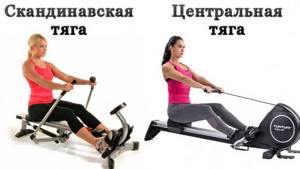
Dimensions and design
By design, simulators are divided into solid and folding. One-piece models are highly stable and most can be stored vertically. Folding models save even more space; moreover, their assembly does not require tools, and the process itself will take no more than 5 minutes.
When assembled, the dimensions of the rowing machine reach 2 m in length, which is explained by the specifics of the mechanism. When choosing a model, you should pay attention to the stability of the structure and the sufficient length of the frame, especially if all family members plan to exercise on the simulator.
Possibility and convenience of adjustments
Adjustment of all significant elements allows you to customize the simulator “for yourself,” which is important for effective training.
Modern magnetic, electromagnetic and aeromagnetic models usually have the ability to adjust the seat, levers (with Scandinavian traction) and footrests. The last option is one of the most important, since the distance between the stops and their placement should be comfortable for a person.
Transmission
When purchasing a simulator of this type, it is necessary to check the quality of the chains and cables of the rowing levers, since the convenience of training depends on their strength. The cables should not be elastic, too weak or very thin. Always check the quality of cables and other fasteners on site or check with the seller what they are made of when ordering from an online store.
Frame design
The frame of the exercise machine can be made of metal or wood. The latter option is used in models with a water engine type. Regardless of the type of frame (solid or folding), the structure should look solid and reliable.
Stability depends on the width of the lower supports, as well as the weight of the machine itself. The weight of the structure is determined by the type of mechanism and the maximum user weight. The lightest models are mechanical and magnetic.
Display and control panel
The display of magnetic trainers displays a minimum of information: distance, calories burned, speed and time of training, stroke frequency and power. Electromagnetic models will show a wider range of indicators, especially if equipped with cardiac sensors.
Today there are also smart models that connect to a smartphone via Bluetooth and via a USB drive to a computer. This way you can save your workout information to track and improve your results.
Cardiac sensors
Heart rate sensors in the handles of the machine (or chest straps on some models) allow you to monitor your heart rate during training and keep it in the desired cardio zone. Cardiac sensor data is displayed on the display.
Many settings on the control panel depend on the presence of a heart rate sensor, for example, recovery tests, which can be used to determine the physical condition of the body.
Load adjustment
The method of adjusting the loads depends on the complexity of the device mechanism. There are stepwise and continuous adjustments. The first is found in mechanical and inexpensive magnetic models, continuous - in electric and aeromagnetic ones.
Continuous allows you to individually configure the simulator for the user. There are also models with a multi-stage adjustment system, which is also considered no less effective.
Training programs
Built-in programs not only add variety to the training process, but also allow you to train purposefully, working on specific muscle groups.
Among the most popular programs: universal cardio training, weight loss regimen, muscle tone. The more built-in programs in the simulator, the more opportunities for achieving individual fitness goals.
Noise level and power supply
A silent exercise machine is an ideal purchase for the home. Among rowing machines, electromagnetic and magnetic models are considered the least noisy. They are ideal for home use.
Electromagnetic exercise machines for home use are connected to a 220 V power supply and do not depend on other batteries. There are also rechargeable models that work without being connected to the network, but require periodic battery recharging. The second option is more profitable, since it does not require constant connection to an outlet.
Maximum user weight
The specifications for each rowing machine indicate the maximum user weight, which is not recommended to be exceeded for safety reasons.
There are the following categories: up to 100 kg, up to 120 kg, up to 140 kg and above. If the maximum permissible weight is exceeded, the machine may fail.
How many calories are burned on a rowing machine?
Author: Dmitry Sirotkin
Rowing looks like very energy-intensive. But is it?
How effective is a rowing machine for weight loss, how many calories does it burn?
Calorie expenditure data shows that this is not the most efficient way to burn calories, although it can be classified as “strong average” .
According to the fitwatch.com calorie calculator, on a rowing machine you can burn on average from 220 kilocalories (with a weight of 60 kg and a slow+ pace) to 1070 kilocalories (with a weight of 120 kg and a fast pace):
Calorie consumption on a rowing machine (kcal per hour)
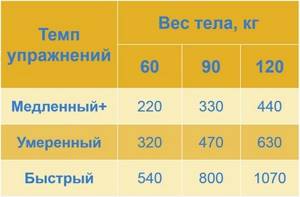
The calculator's calculations for heavy weights should be treated with caution, especially for fast-paced workouts. The calculator calculates a theoretically possible, but practically unattainable amount of calories. For example, if you weigh 180 kg and exercise at a fast pace, you could burn 1610 kilocalories in an hour. It is clear that it is extremely difficult for people who are obese and not in good physical shape to withstand such a load, and even dangerous for their health.
I also note that the given figures are not maximum (within the specified scales). For example, with a weight of 120 kg and a very fast pace of exercise, you can spend, according to calculations, 1510 kilocalories per hour. But this is clearly no longer a guideline for ordinary and, moreover, overweight people.
In general, the rowing machine occupies an average position in terms of the number of calories burned among the most popular exercise machines (for more details, see the article Which machine is best for losing weight?).
However, you should hardly limit yourself to this indicator only when choosing a simulator. A successful or unsuccessful choice of a simulator may depend on a number of other factors. Therefore, it is useful to also consider the main advantages and disadvantages of a rowing machine (for more details, see the article Rowing machine for weight loss).
Benefits of a rowing machine
- Most of the body's muscles are involved quite comprehensively. The main load falls on the muscles of the back, shoulder girdle, and arms, so for the most part you can build muscle in the upper body.
- Minimal risk of injury with proper exercise technique.
- Wide range of prices, average price level for a rowing machine compared to other machines (lower than an elliptical machine, higher than a stepper).
- A fairly simple technique for performing movements that is easy to learn.
Disadvantages of a rowing machine
- Contrary to the seemingly obvious logic of “the more muscles used, the more calories are burned,” the rowing machine does not burn too many calories and ranks only 4th among the five main exercise machines in this indicator.
- There are a number of contraindications for exercise: diseases of the spine, diseases of the joints, diseases of the cardiovascular system, high blood pressure, etc.
- There is a risk of damaging your back if the technique is performed incorrectly.
- For people in poor physical shape (and these often include those who want to lose weight on a rowing machine), the loads may be too heavy, which encourages refusal to exercise.
- Quite large dimensions (usually about two meters in length) and weight, which can create problems when using the exercise machine at home.
- The monotony of exercises on this simulator: in fact, you perform only one exercise, having the opportunity to vary only the intensity of the “stroke”.
- Belt driven exercise machines require regular maintenance.
As you can see, the ratio of advantages and disadvantages of this simulator is not such as to make an unambiguous conclusion about its purchase. You need to weigh everything well . By the way, in practice, men prefer the rowing machine.
I would be grateful if you share the link to the article on social networks with your friends. Use the network buttons below .
Comments are also highly welcome!
Rowing machine for weight loss, or goodbye to extra pounds
The rowing machine is ideal for losing weight. During training, this unit works a large number of muscles, which forces the body to get rid of fat deposits.
In general, a rowing machine is classified as a cardio exercise machine, but it can also be used to successfully perform strength training for the legs, arms or back. Set the resistance to maximum and your muscles will feel a serious strain.
Rowing machine - a universal and profitable purchase
By purchasing a rowing machine for your home, you can:
- Pump up your legs, arms, shoulders, chest, abs and back.
- Strengthen the heart muscle.
- Develop endurance.
- Lose weight on the rowing machine.
How does fat burning happen?
Fat deposits in the human body are stored in the form of a triglyceride substance, which is stored in cells. Our body uses triglyceride for the construction of hormones, as well as cell membranes, and, what is most important for us in this topic, for energy supply. That is, in order to get rid of fat, we need to constantly expend the energy stored in our body. In other words, you need to move more, exercise yourself physically and eat less.
It is important to know that at the beginning of training, our body uses the small reserves of carbohydrates that exist in our body, and only then begins to take energy from fat cells. Therefore, training on a rowing machine for weight loss should be long - at least 20-30 minutes.
Tips for losing weight
- All the positive reviews of girls losing weight on a rowing machine are the result of systematic training. If you stick to your exercise schedule, you will be able to achieve your desired goal in the shortest possible time.
- Watch your diet. It is impossible to lose weight even from the most difficult physical activity if your portions are huge every day. Everything, again, must be in the system. This means that each meal occurs at a time you predetermine.
- The formula for losing weight looks like this: you need to consume fewer calories per day than you burn. Everything is very simple! Initially, this process may cause you difficulty, but later you will get the hang of it and everything will happen automatically.
- A rowing machine for women is a very useful sports device, but do not forget about other exercises. Try to add variety to your workouts.
“Sports Zone” – a fitness equipment store with attractive prices
In our online market you will find a wide range of various sporting goods, the prices of which will delight you. We have extensive experience working with various exercise machines, so our managers will help you choose the best and most effective model that will certainly help you achieve your goals. In addition, we quickly and accurately deliver goods ordered from us to all cities of our huge country. Call now.
Benefits of Rowing Training
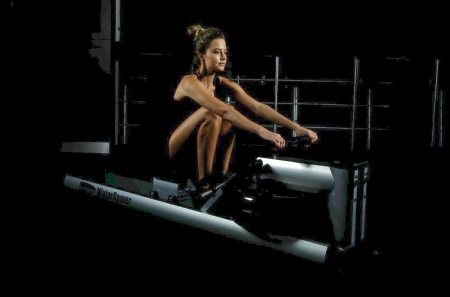
The impressive benefits of rowing training are not a gimmick or a marketing gimmick. Rowing is not a new activity that requires advertising support. It has a centuries-old history, and its countless benefits are scientifically proven!
American College of Sports Medicine
(American College of Sports Medicine) considers rowing machines "the best equipment in the gym" that allows you to "train all important muscle groups with a smooth and controlled movement." Men's Health magazine says that "rowing machines provide the best full-body workout of any cardio machine because they work both the lower and upper body, leading to enhanced results." Even NASA astronauts use rowing machines for their effectiveness.
Below are the top 10 benefits of rowing:
Which rowing machine is best?
It is impossible to say unequivocally which version of the simulator is better to choose, since it all depends on individual preferences. Popular designs include:
- Concept 2
. If you like magnetic rowing machines, then this model is a good option for your home. It stands out due to its unique aerodynamic resistance system. There is a monitor to monitor the parameters. Another plus is that it can be easily and quickly disassembled.
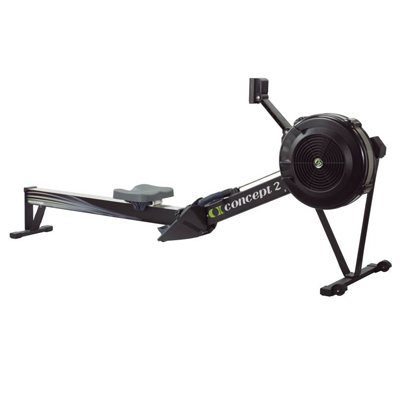
- Kettler Favorite
. Here the load system is mechanical with hydraulic drive. The hydraulic system is smooth and the degree of force can be adjusted. There is a sensor for measuring pulse.

- Torneo Golfstream
. A good model for beginner athletes, with a simple and small-sized apartment. This rowing machine is affordable, but this is reflected in the build quality and components.
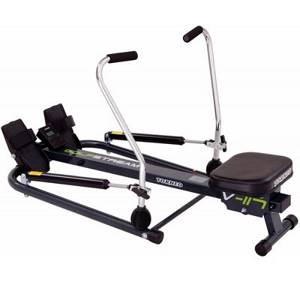
Improvement of the cardiovascular system
Like other cardio exercises, rowing forces the heart to pump blood through muscle mass, providing it with energy (oxygen), nutrients, and removing waste products (carbon dioxide and lactic acid). However, rowing has a much greater impact on the described processes, which makes training more effective. The fact is that rowing machines use more muscles.
(according to various sources from 80% to 95%) than on other cardio equipment. More muscles require more energy, which means more blood circulation and heart function. Dr. Levine's work with NASA demonstrates that 30 minutes of rowing can be as effective as 90 minutes of cycling.
In addition, given that the human body is amazingly efficient at adapting to different loads, it is simply useful to vary the load for training. Get off the treadmill, get on the bike, then onto the rowing machine.
Types of rowing machines
There are several types of such installations, which differ in their operating principles and capabilities.
- Mechanical
. The most affordable exercise machines, but it is worth considering that this is reflected in the number of available functions. - Magnetic
. These options have different functionality and are convenient. Magnetic rowing machines are more expensive than the first type reviewed. These settings are easy to adjust. - With built-in electromagnet
. The most expensive option with increased functionality. One of the advantages is that it is almost silent.
Increased calorie burning
Competitive rowers burn almost twice as many calories over a 2000m race as a steeplechase runner over a 3000m race.
The amazing calorie-burning effect of rowing is due to the large number of muscles involved. Data on the number of calories burned varies due to different training conditions. For example, Harvard Health Publication states that an 84 kg rower burns 377 kcal in 30 minutes. Frederick Hagerman of the physiology lab at Ohio University says rowing burns 10 to 15 percent more calories than cycling. There is evidence that an hour-long session on a rowing machine burns 600 kcal. Instructors of the ShockWave and WaterRower rowing machines claim that participants in these programs burn an average of 800 calories per hour! Agree that burning 400-800 kcal in less than an hour is amazing.
Full body workout. Increased muscle strength and endurance
The unique thing about rowing is that it allows you to increase both strength and endurance (although endurance, of course, comes first). Through repeated pushing and pulling movements you cause an adaptation in the body, the muscles are forced to perform the effort without corresponding fatigue. By increasing the load over time, you force the muscles to grow, becoming stronger. With consistent exercise, you will also speed up your metabolism. More energy means more opportunities to do what you love!
For those who have never used a rowing machine, it may seem like all the stress falls on your arms and core. In fact, unlike where the load is distributed unevenly (95% on the lower body and 5% on the upper), the distribution of effort in rowing is 60% on the lower body and 40% on the upper
.
At the beginning of the movement, the lower body is involved. The primary muscles here are the quadriceps and the anterior thigh muscles. These muscles are involved in the process of knee extension as well as hip flexion, which allows for powerful movement of the legs. The calf and gluteal muscles are also targeted in rowing.
During the stroke, you flex your hips and core, which appears to engage your abdominal muscles in a similar way to crunches. In fact, the resistance is in the opposite direction, which means that the gluteal muscles, lower back muscles and hamstrings are activated. The abs are engaged during the recovery stage, when you return to the starting position! Regarding the upper body, rowing works the trapezius and rhomboids muscles of the upper back, the latissimus muscles of the lower back, as well as the biceps, triceps and pectoral muscles. In general, rowing movements replicate the mechanics of movements in everyday life, which allows them to be characterized as functional movements.
Advantages of the projectile
In addition to helping you lose weight, the rowing machine has other benefits:
- During exercise, almost all muscles of the body are involved. The main load falls on the arms, shoulders and back.
- A simple movement technique that anyone can master.
- Minimal risk of injury during exercise.
However, despite the prevalence and effectiveness of the apparatus, not everyone knows how many calories a rowing machine burns, and there are several quite important reasons for this.
Low risk of injury
In rowing, the negative stress on the joints is minimized. Since the rower is in a sitting position, with his feet resting on the stand and his hands holding the handle, there is very little stress on the ankles, knees, hips, elbows and shoulders.
The movement of rowing is the opposite of our daily activity when we are sitting at a computer, typing or driving. This allows rowing to be used as a “cure” against the negative effects of modern lifestyle. Each stroke requires leg press, hip flexion/extension, and shoulder blade retraction (chest opening). We go through a series of movements that increase mobility in the lower back, knee, and shoulder joints.
But rowing is great not only for preventing injuries, but also for those who have already encountered similar problems. For people who are overweight or have joint problems, rowing may be an option. For runners, rowing is an excellent tool for aerobic training, which, however, puts much less wear on the joints that are problematic for runners: knees, ankles, and back. Moreover, if you already have problems with your knees (surgery) or back, rowing will help you recover. Therefore, it is also used in rehabilitation.
Rowing machine - contraindications
For training to be extremely beneficial, it is necessary to take into account existing contraindications.
- It is prohibited to exercise if there are serious problems with the cardiovascular system and damage to the spine and joints.
- A rowing machine for knee arthrosis is not recommended if the problem worsens, and it is better to visit a doctor.
- Contraindications include arterial hypertension.
Share on social media networks
RќСЂР°РІРёС‚СЃСЏ
